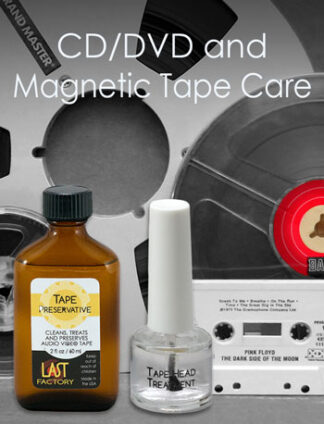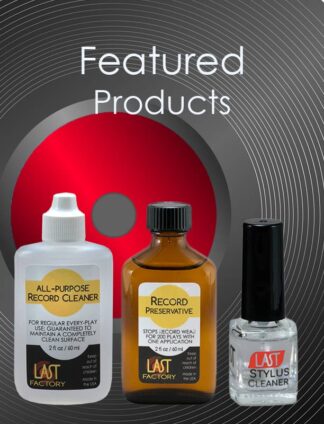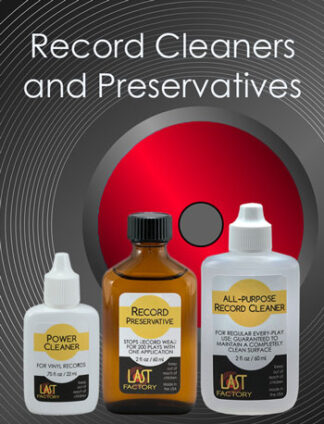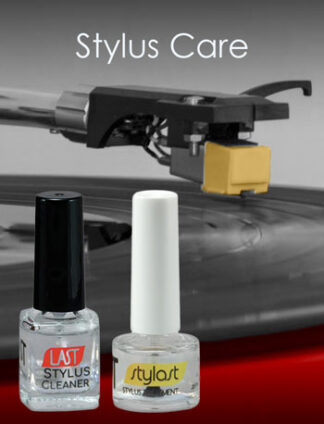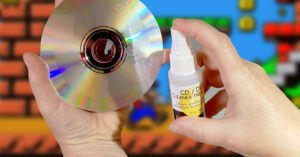 I am looking at the Last CD/DVD Cleaner/Treatment, but just have some questions if I may. Is the CD cleaner abrasive? I have found the playing surface of all CDs to be exceptionally prone to scratching no matter how careful one is when using any sort of cleaning cloth (microfibre or otherwise and no matter what technique or how minimal the pressure is) unless the cloth is always lubricated with a fluid of some sort. In fact I have found that having a fluid lubricate the cleaning action is more important for avoiding any minute scratching than the type of cloth used (i.e. a dry microfibre cloth may scratch the surface but a lubricated hypoallergenic tissue will not).
I am looking at the Last CD/DVD Cleaner/Treatment, but just have some questions if I may. Is the CD cleaner abrasive? I have found the playing surface of all CDs to be exceptionally prone to scratching no matter how careful one is when using any sort of cleaning cloth (microfibre or otherwise and no matter what technique or how minimal the pressure is) unless the cloth is always lubricated with a fluid of some sort. In fact I have found that having a fluid lubricate the cleaning action is more important for avoiding any minute scratching than the type of cloth used (i.e. a dry microfibre cloth may scratch the surface but a lubricated hypoallergenic tissue will not).
Up until now, for CD I have used the spray I get from my Optometrist that I also use or my glasses. I mist the entire playing surface then wipe slowly with a hypoallergenic tissue. This leaves zero scratches. The spray cleaner my Optometrist provides seems to have some sort of lubricating or slight detergent properties that I believe plays a significant role in avoiding any sort of minute scratching at all.
With the various CD cleaning products I have been looking at, however, they seem to come in two types – either an outright sort of creamy polish which I cannot believe would not leave minute scratching, or otherwise fluids that do not really seem to have obvious lubricating properties. Not wishing to try every single product on the market, I was wondering if you could advise me whether the Last CD/DVD Cleaner/Treatment fluid would have some sort of lubricating properties (similar to eye glass spray) when used, or are the properties more like water (or something else again?). -P.J.
LAST CD/DVD Cleaner/Treatment agent contains no abrasive elements of any kind. Technically, it is a suspension (milk is a suspension), wherein the cleaning and polishing agents are suspended in the solution. Rather than lubricating properties, we characterize the product as a cleaner treatment that puts in place, on the playing surface, a mono-molecular treatment that acts in the same way that a similar treatment would perform on eye glasses or the lens of a camera. The overall effect is to increase the transmission of the IR laser beam from the machine’s flying head. Very minor surface scratches or “scuff” abrasion artifacts are filled or the edges softened to the point that deflection of the IR beam is reduced or eliminated. During the development of the product we used a modified CD player that would report the number of errors that would occur during the playback of a CD. Brand new CDs, right out of the case would often exhibit error counts approaching 100. Uncleaned, untreated discs that had been in use, would have error counts measuring many hundreds to a thousand (or more) errors. Cleaning and treating a new, unplayed disc with the LAST product would yield an error count in the low teens or single digits. In summation, rather than characterizing LAST CD/DVD Cleaner/Treatment as either a polish or lubricant, we prefer the analogy of an optical surface treatment with build in cleaner.We wish to extend our Thanks for your questions, and search for an understanding of the optical/mechanical properties of available products. We hope the above is helpful.
With best regards, Walter
Thanks


